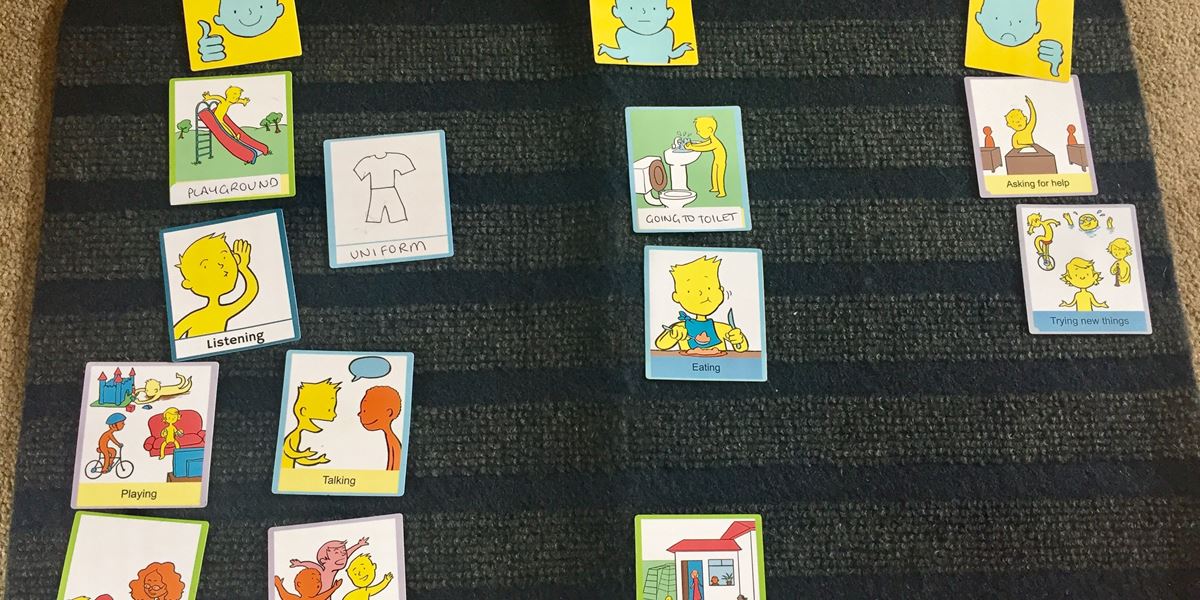Talking Mats
Talking Mats is a visual communication framework which supports people with communication difficulties to express their feelings and views, including about what matters to them.
Developed by a social enterprise, Talking Mats is an interactive resource that uses 3 sets of symbols – topics, options, and a visual scale – and a space on which to display them. This can either be a physical mat, or an app used on a tablet or computer screen.
It can help people with communication difficulties to:
- understand and consider issues discussed with them
- express their opinions effectively
- be included in decision making
Resources needed
- Time to do: 30 to 60 minutes
- Staff: one person
- Cost: ££
- Equipment: mat and symbol cards, or access to the digital app
Suitable for
- one-to-one
- face-to-face
- online
How to do it
- Be clear about what it is you want to achieve. This will help you consider how best to use the Talking Mat.
- Consider and agree the topic for discussion.
- Give the participant options, one at a time, and ask them to think about each one, placing it on the Talking Mat to indicate how they feel about it.
- Use open questions.
- Work at the participant’s pace.
- Match the cognitive demands of the question with the cognitive ability and life experience of the person you are communicating with.
- Use consistent language.
Advantages
- Supports person-centred care by ensuring an individual’s voice is at the heart of planning and delivery
- Helps a person’s understanding, reflection, and expression
- Provides a framework that supports decision making
- Supports health and care staff to adapt their communication style and practice
- Provides a structure where information is presented in small amounts, supported by symbols
- Gives people time and space to think
- Reduces memory demands
- Allows people to say what they feel in a visual way that can be easily recorded
Did you know?
Initially designed by Speech and Language Therapists, Talking Mats can be used to support adults and children who have communication difficulties, including people with learning disabilities, dementia, mental health issues and stroke.
Challenges
- It requires planning time.
- It cannot be used by people with profound cognitive impairments.
- Although it appears simple, the planning and process of carrying out a mat is not simplistic. Consider undertaking training to get the most out of the tool.
- It is not a communication aid for everyday conversation.
- There is a cost to purchasing the resource and training.
More information
For further information, including about resources and training courses, contact:
Talking Mats
5 Beta Centre
Stirling University Innovation Park
Stirling
FK9 4NF2
Tel: 01786 479511
Email: info@talkingmats.com
www.talkingmats.com
A range of free resources is also available at www.talkingmats.com/research/free-resources/
Image credit: Talking Mats


